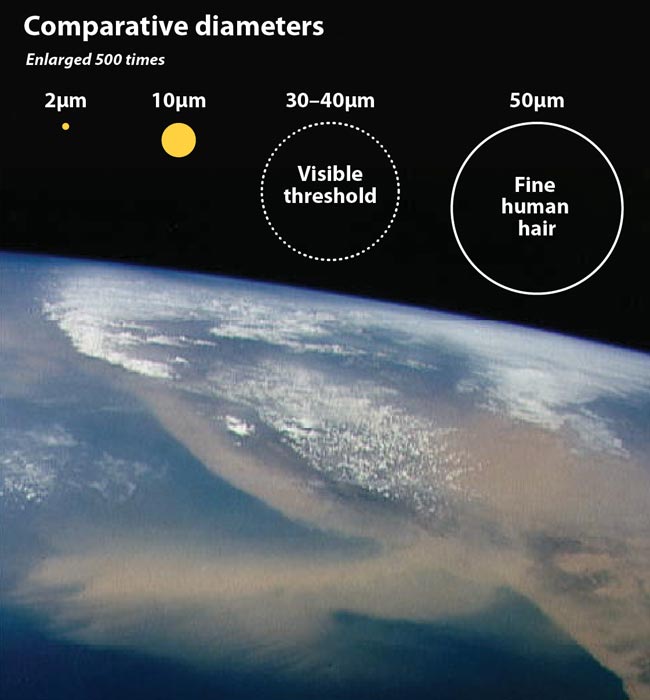Dust Shatters Like Breaking Glass, Study Finds

Dust particles shatter in a pattern resembling that of broken glass, according to new research, which may have implications for predicting both weather and climate change.
These microscopic particles scatter when grains of sand are blown into soil, breaking the dirt apart and sending out fragments into the air, which can be as large as about 50 microns in diameter, approximately the thickness of a fine strand of hair.
"As small as they are, conglomerates of dust particles in soils behave the same way on impact as a glass dropped on a kitchen floor," said Jasper Kok, the researcher who conducted the study and a scientist at the National Center for Atmospheric Research (NCAR) in Colorado. "Knowing this pattern can help us put together a clearer picture of what our future climate will look like."
This is because the size of the particles affects the temperature at the Earth's surface. Small ones, called clay, stay in the atmosphere for about a week, and they cool the Earth's surface by reflecting the sun's heat. Larger particles, called silt, stay airborne for a shorter period and have the opposite effect, trapping energy and warming the atmosphere (and Earth's surface).
Kok's work, which focused on a type of airborne particle called mineral dust, also suggests that there may be several times more dust particles pumped into the atmosphere than previously believed, since shattered dust appears to produce an unexpectedly high number of large fragments.
His study, published online Dec. 28 by the journal Proceedings of the National Academy of Sciences, indicates that the ratio of silt to clay particles is two to eight times greater than represented in climate models. Since climate models simulate the actual number of clay particles in the atmosphere, Kok's work suggests that the models are likely to be inaccurate when it comes to silt particles.
Adjusting the quantity of large particles accounted for by computer models could result in better projections of future climate in desert regions — where the most particles are present, according to a statement by NCAR.
Get the world’s most fascinating discoveries delivered straight to your inbox.
More research is needed to determine whether future temperatures in those regions would increase as much or more than currently indicated by computer models.
Dust particles also affect clouds and precipitation, so the study's results could lead to improvements in weather forecasts, according to Sarah Ruth, program director in the National Science Foundation's Division of Atmospheric and Geospace Sciences, which funds NCAR.
Brittle objects, like glass, fracture in predictable patters, with their fragments following a certain range of sizes, with a certain distribution of small, medium and large pieces. Physicists have developed mathematical formulas to describe the process by which cracks propagate in predictable ways as brittle objects break.
Kok applied the fracture formulas to soil measurements and discovered the size distribution of emitted dust particles. He found that the formulas described field measurements of dust particle sizes almost exactly.
"The idea that all these objects shatter in the same way is a beautiful thing, actually," Kok said. "It's nature's way of creating order in chaos."
You can follow LiveScience writer Wynne Parry on Twitter @Wynne_Parry.
 Live Science Plus
Live Science Plus






